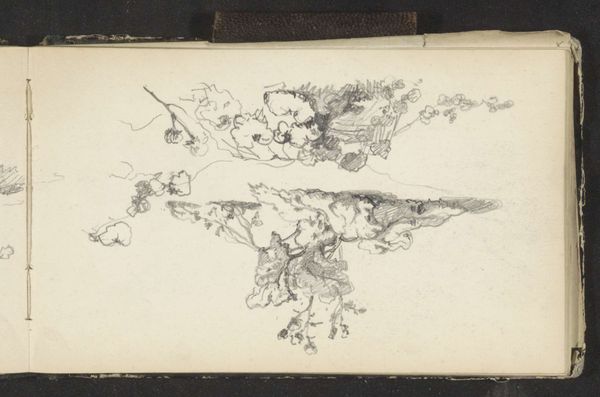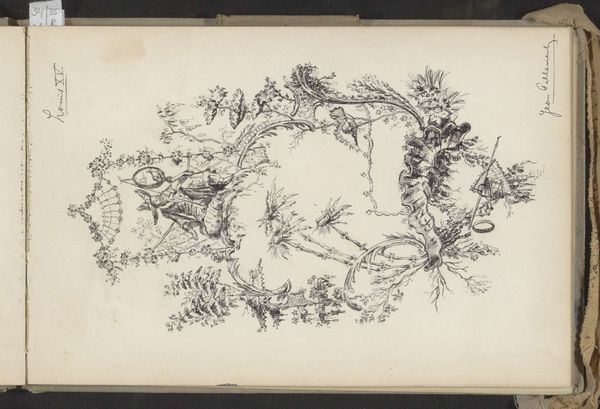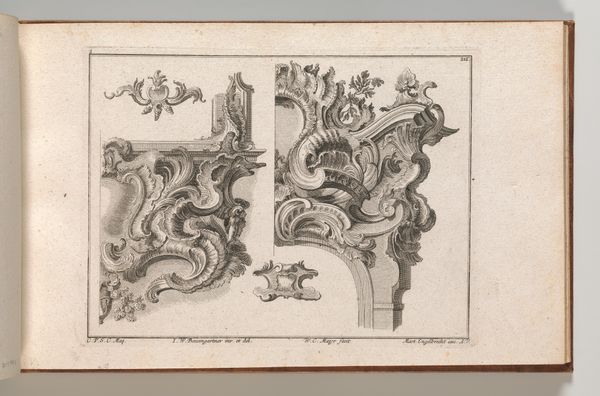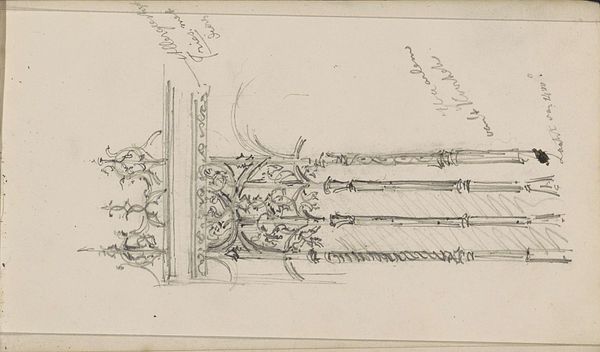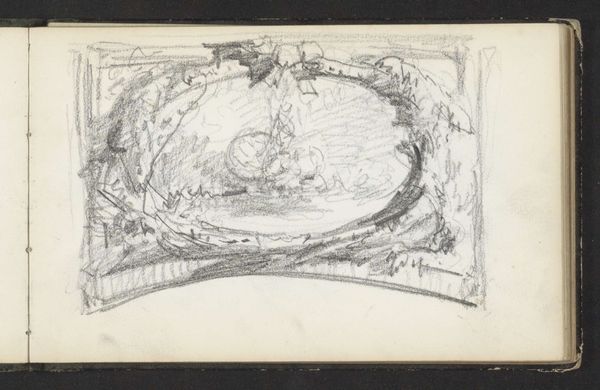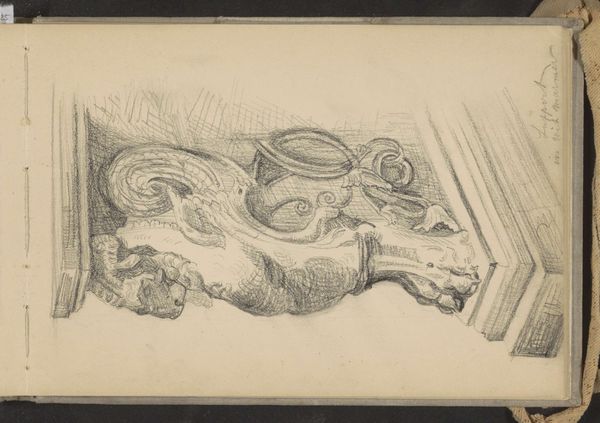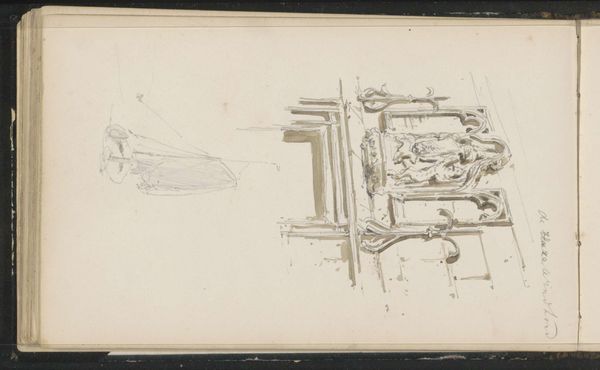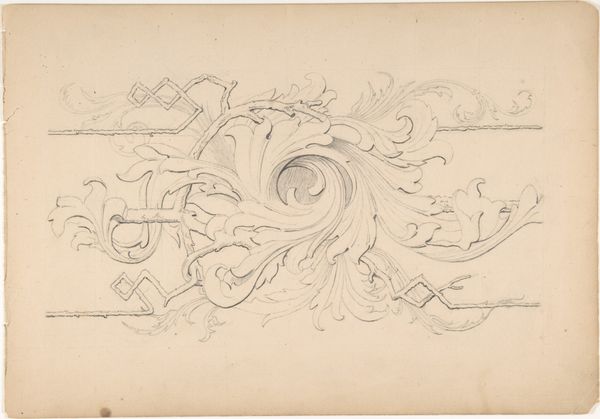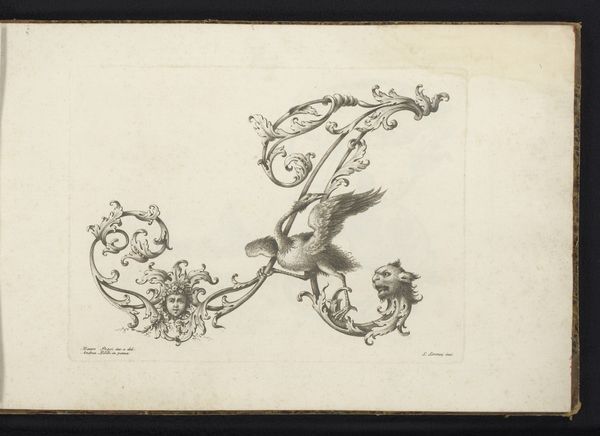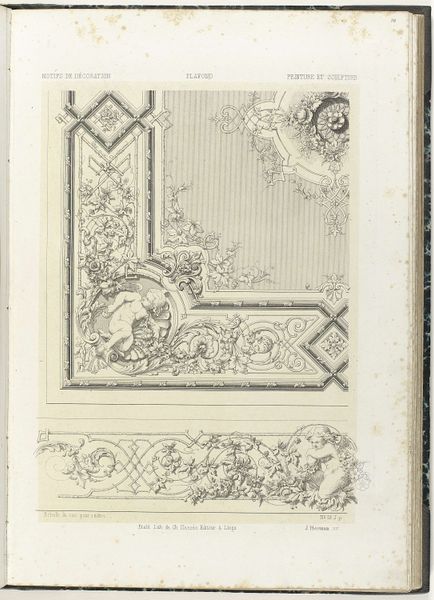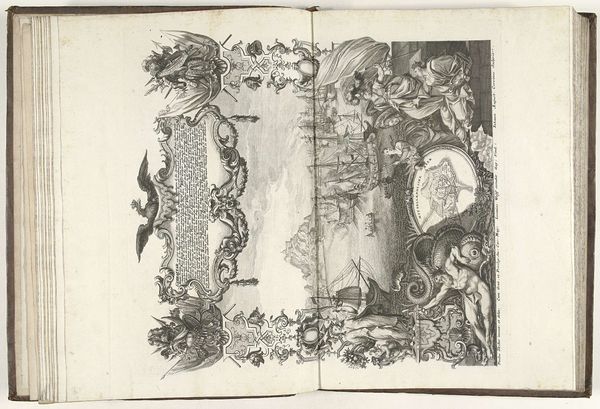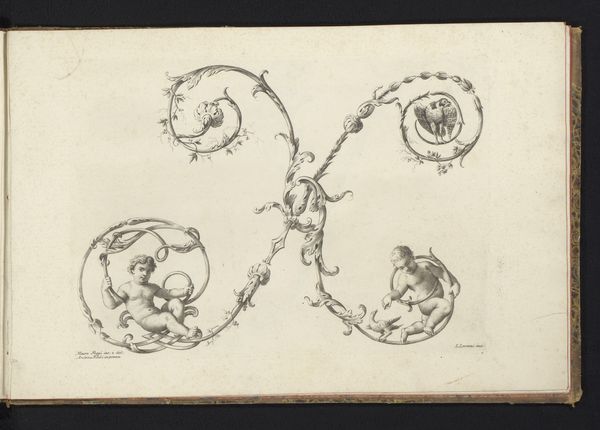
Houtsnijwerk van een afsluitwand in de Grote Kerk te Dordrecht en ornamenteel beeldhouwwerk uit het Paleis op de Dam c. 1890 - 1922
0:00
0:00
drawing, paper, ink, sculpture, pen
#
drawing
#
neoclassicism
#
pen sketch
#
paper
#
ink
#
sculpture
#
pen
Copyright: Rijks Museum: Open Domain
Curator: So, what leaps out at you when you first see this study, Editor? To me, it has such an intense, committed mood... a sort of "preparatory delirium." Editor: Preparatory delirium, I love that. It feels right for a work focused on architectural ornamentation. The rigid lines fight the organic forms. It’s a strange battle. Curator: It is strange, but consider what's being documented here. This is Johanna van de Kamer's drawing capturing wood carvings from around 1890 to 1922, depicting woodwork of an enclosure in the Grote Kerk at Dordrecht, and ornamental sculptures from the Paleis op de Dam. So there’s the rigidity of architectural planning against the sort of flowering ornamentation that’s grafted on. Editor: Oh, I see it. Religious authority, represented in the carvings from the Grote Kerk, versus secular power symbolized in the Dam Palace pieces... Van de Kamer clearly understood their symbolism and the inherent tension between those institutions in Dutch society. It reminds me of visual arguments common in Dutch Golden Age paintings. Curator: Precisely! And look at how the drawings treat botanical forms – a flower, what looks like laurel perhaps...these all had immense cultural cache during the Neoclassical period that influenced both the palace decorations and ecclesiastical spaces of that time. The Church adopted Neoclassicism as part of their symbolic vocabulary too! Editor: So, there's almost a deliberate contrast created. The meticulous ink work gives these rather bombastic carvings a stark graphic quality – we’re not seeing the pomp as much as the planning that preceded it. It deflates a bit, doesn't it? Or maybe grounds it is the better word. Curator: Exactly. I think what makes this study particularly evocative is how it captures a fleeting moment of transition and intention, bridging artistry and planning, belief and… well, its physical manifestation in the world. Editor: I hadn't considered it quite that way but understanding the intent really opens it up, it transcends the page... I won't see architectural details the same way now. Curator: It makes you realize everything is designed; everything tells a story!
Comments
No comments
Be the first to comment and join the conversation on the ultimate creative platform.
